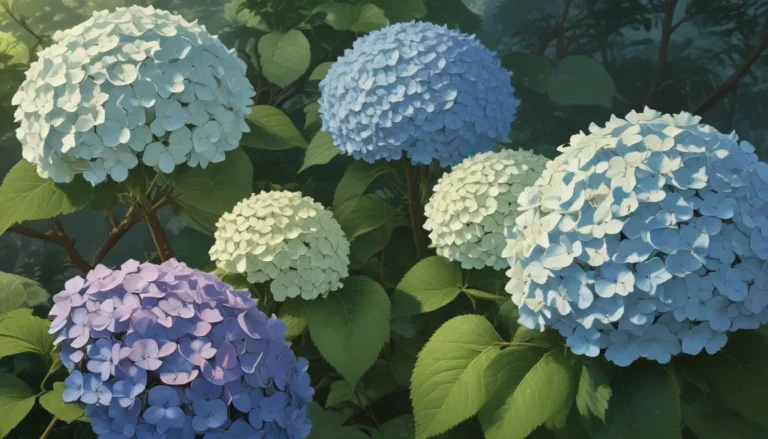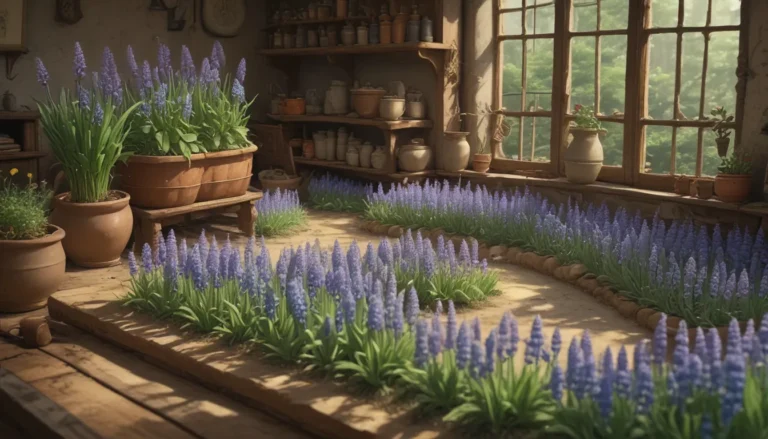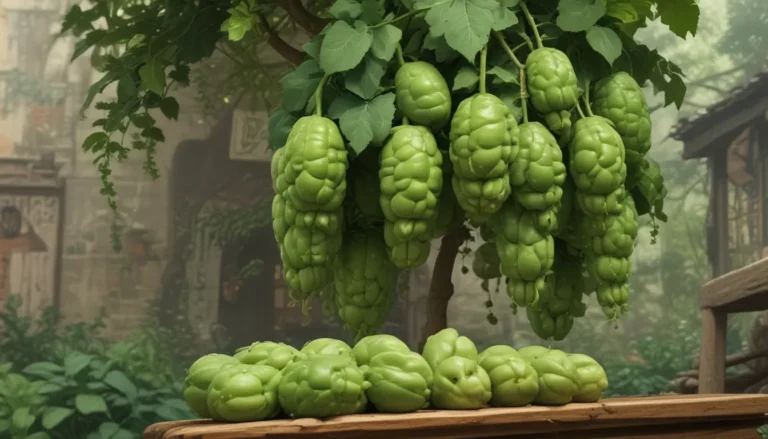The Complete Guide to Growing and Caring for Wood Hyacinth (Spanish Bluebell)

Wood hyacinth, also known as Spanish bluebell, is a delightful flowering perennial bulb that thrives in USDA Hardiness Zones 3-8. These versatile spring bloomers provide a burst of blue-lavender, pink, or white bell-shaped flowers from April to May. Easy to care for and robust, wood hyacinths have been cherished in English gardens throughout history and continue to be beloved today.
In this comprehensive guide, we will cover everything you need to know about growing wood hyacinth in your garden. From cultivation and history to propagation, growing tips, pruning, maintenance, cultivars to select, managing pests and diseases, best uses, and a quick reference growing guide, we’ve got you covered.
What You’ll Learn
Let’s dive into the fascinating world of wood hyacinths and learn how to cultivate and care for these stunning bulbs to create a vibrant garden oasis.
Cultivation and History
The botanical name for wood hyacinth is Hyacinthoides hispanica, and it is native to Spain, Portugal, and northwest Africa. The bell-shaped flowers, often a deep blue-periwinkle shade, are the reason behind the common name “bluebell.”
The name “Hyacinth” is derived from the Greek word “hyákinthos,” which relates to a mythical youth whose name inspired the genus. Wood hyacinths, also known as Spanish bluebells, thrive in the cool, dappled shade provided by woodlands and deciduous trees.
These plants are distinct from other bluebells, such as the English bluebell, with later blooming periods, taller heights, and non-fragrant flowers. Wood hyacinths are pollinator-friendly but contain cardiac glycosides, making them toxic if ingested.
When planting wood hyacinths, caution should be taken to prevent hybridization with English bluebells, resulting in H. x massartiana. This hybrid is common and often misidentified as Spanish bluebells.
Propagation
Wood hyacinths can be propagated from seeds or bulb offsets.
- From Seed: Collect seeds from ripe flowers in summer and sow them in pots with well-draining soil. Keep the medium moist and wait for germination in the following spring.
- From Bulb Offsets: Dividing bulb offsets is a reliable way to propagate true Spanish bluebells. Remove offsets in mid to late summer and replant them immediately in prepared soil.
How to Grow
Wood hyacinths thrive in cool, dappled shade and prefer organically rich, well-draining, and moist soil. While they tolerate a wide pH range, they perform best in slightly acidic to neutral soils. Provide regular watering, feed with a low-nitrogen fertilizer in spring, and avoid oversaturating the soil.
Wouldn’t it be lovely to see these vibrant blooms indoors? You can force wood hyacinth bulbs to bloom during the winter by following a simple process.
Growing Tips
- Plant in areas with dappled shade.
- Keep the soil moist but not wet.
- Fertilize with a low nitrogen fertilizer in the spring.
Pruning and Maintenance
Maintain your wood hyacinths by deadheading spent flowers to prevent self-seeding and remove bulb offsets to prevent excessive spreading. It’s essential to leave foliage intact after flowering to support next year’s blooms. Consider planting with ferns or hostas to conceal fading foliage.
Cultivars to Select
While the classic blue wood hyacinth is a favorite, pink and white varieties are also available. Consider these stunning cultivars to add variety and interest to your garden.
- Dainty Maid Pink: A light-pink variety that brightens shady areas.
- Excelsior: A popular deep blue-violet cultivar with glossy green leaves.
- White City: Featuring bright white flowers for a fresh contrast in a woodland setting.
Managing Pests and Disease
Wood hyacinths are resistant to deer, rabbits, and rodents, and typically free from serious insect pests and diseases. Keep an eye out for slugs and snails during wet weather, and ensure good drainage to prevent rot issues. Proper care and suitable conditions will keep your wood hyacinths healthy and thriving.
Best Uses
Imagine a sea of blue flowers under a canopy of trees, blooming in the gentle sunlight. Wood hyacinths are perfect for woodland gardens, borders, rock gardens, and containers, where they can be showcased alongside tulips and daffodils. These versatile plants bring joy to wild and naturalized plantings.
Quick Reference Growing Guide
- Plant Type: Perennial flowering bulb
- Flower / Foliage Color: Blue, pink, white/green
- Hardiness (USDA Zone): 3-8
- Maintenance: Low
- Bloom Time: Mid to late spring
- Soil Type: Loam, sand
- Exposure: Dappled sun, part shade
- Soil pH: 5.5-7.0
- Spacing: 4-6 inches
- Height: 9-18 inches
- Spread: 2-3 inches
- Water Needs: Medium
- Attracts: Bees, butterflies, other pollinators
- Uses: Bulb beds, borders, containers, naturalized areas, rock gardens, woodland plantings
Wood hyacinths are truly a woodland gem, adding charm and color to spring gardens. These vibrant flowers bring back memories of old-world gardens and childhood joys. Share your experiences with wood hyacinths in the comments below, whether you’re a seasoned gardener or simply appreciate their beauty.
For more insights into growing flowering bulbs, check out these articles next:
- How to Grow Heavenly Hyacinths for Rich Spring Color and Sweet Perfume
- How to Grow and Care for Crocus Flowers
- Delightful Dahlias: A Late Summer Standard
By incorporating new sections, detailed information, and helpful growing tips, this revised article provides a comprehensive guide for readers looking to cultivate wood hyacinths in their gardens. From propagation methods to pruning techniques, this extensive resource covers everything you need to know to grow and care for these vibrant spring blooms.





